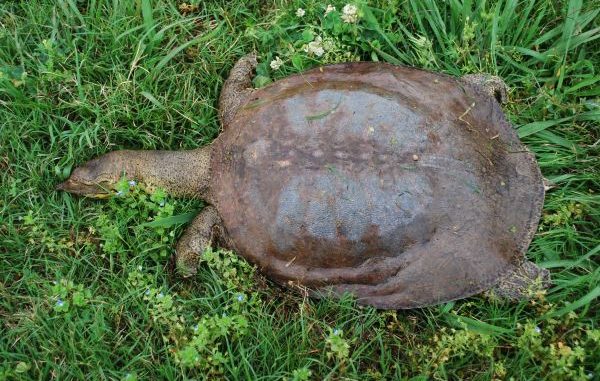
Louisiana has 25, maybe 26 species of turtles within its borders or along its coastline. Not all of these are targets for freshwater turtle fishermen.
Excluded are the five species of sea turtles — all of which are protected — and the diamond-backed terrapin, a delicious turtle but one found in brackish marshes rather than fresh water.
Also not on the hit list are land turtles: two species of box turtles and the golpher tortoise, the latter of which is a protected species.
The larger snapping turtle and alligator snapping turtle (loggerhead) are great table fare, but too large to catch in wire traps.
Not worth harvesting are the three or four species of mud, musk and stinkpot turtles. They are small and — as their name indicates — stinky. They are easily recognized not only by their size, but by the fact that their shells are quite oval-shaped, rather than roundish.
This leaves us with nine species of hardshell turtles and two softshell turtle species.
The ringed map turtle found only in Washington, St. Tammany and Tangipahoa parishes is a federally protected species. Four species of map turtles occur in Louisiana, all of which are easily recognizable by a row of very noticeable, large saw teeth running down the center of the back shell. To be on the safe side, turtle harvesters should probably release these. Most are a little on the small side to clean anyway.
Both species of softshell turtles, the smooth and the spiny, are edible, and the latter grows to large sizes — as big as a washtub. Smooth softshell turtles are found in upland waterbodies, avoiding South Louisiana’s swamps and lowlands. Spiny softshells are found statewide.
A note of caution about handling softshell turtles: They are not “slow as a turtle” and can run like racehorses. Their jaws and claws deserve respect.
“Softshells have long necks and require cautious handling because of their ability to reach far around to bite,” herpetologists Harold Dundee and Douglas Rossman in their book Reptiles and Amphibians of Louisiana noted. “They also kick furiously, thus creating an additional hazard from their sharp claws.”
Of the remaining five species, by far the most common in Louisiana and the most important to turtle harvesters is the red-eared turtle, called the “mobelian” in South Louisiana or “streaky-head” in North Louisiana. Dundee and Rossman called it “the” freshwater turtle of Louisiana and biologist F. R. Cagle stated in 1950 that 80 percent of the freshwater turtle population of Louisiana were red-eared turtles.
Besides one softshell turtle, red-eared turtles made up 100 percent of Matherne’s catch during a recent trip.
Red-eared turtles receive their name from the usually prominent red streaks located on the head behind each eye. The streak is larger in males than in females, and is darker on some individuals than others, probably due to age.
As red-eared turtles age, the bright colors of their top and bottom shells become less distinct and are replaced by blotchy black mottling.
Occasionally, turtles with yellow streaks instead of red streaks are found. These are of the same species.
Red-eared turtles begin feeding and can be caught in traps when water temperatures move past 50 degrees Fahrenheit.
Although turtle traps are usually baited with fish, in the wild red-ears feed on more plant than animal matter. The most-common animals eaten are crawfish, tiny crustaceans and insects.
Red-eared turtles leave water to dig nests on land to deposit their eggs between late March and mid-July. Two to 19 oval, leathery-shelled eggs are laid per clutch.
After laying her eggs, the female covers them with dirt and abandons them. If not found by predators such as raccoons (and a lot are), the eggs hatch in 68 to 70 days.
The red-eared turtle was the primary turtle of the pet turtle trade that was killed in 1975 by the US Food and Drug Administration because of the possibility of children getting salmonella infections from kissing their pet turtles.
The pet turtle business was big. Everyone from young kids to full-time commercial fishermen scooped them up for sale. In the early 1960s, a baby turtle brought the catcher 25 cents, big money for those days (remember that Coca Colas only cost a nickel then).
The trade became so large that a large number of turtle farms were established in Louisiana. After the ban on pet turtle sales, most went out of business, although a couple dozen still produce turtles for the export trade, primarily to Asia.
